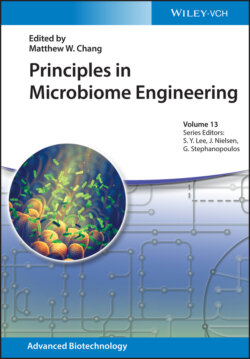Читать книгу Principles in Microbiome Engineering - Группа авторов - Страница 42
1.3.2 Inflammatory Disease
ОглавлениеIn the event of microbiome dysbiosis, inflammation occurs resulting from the immune system attempting to remedy the situation [188]. There are increasing evidences suggesting the link of diet, microbiota imbalance, and the pathogenesis of the inflammatory disease. The nutritional composition may trigger inflammation through direct interactions with the mucosal tissues and indirect interactions by altering the microbiota composition [164, 189–192]. We will discuss IBD as a case study on the effect of diet on IBD pathogenesis.
Patients suffering from IBD experience due to long‐term incidences of tissue inflammation on the dorsal end of the GI tract [193] that can be divided into Crohn's disease (CD) and UC. The dietary habits of individuals can either prevent or increase the risk of developing IBD [193]. A westernized diet abundant in fat and protein increases the risk of developing IBD [194], while fiber‐rich diet was found to lower the risk of developing IBD in rats [195, 196]. As discussed in Section 1.2, a fatty and protein‐rich diet was found to enrich Proteobacteria and deplete Firmicutes and Bacteroidetes involved in the biosynthesis of butyrate production [197–199]. These reduced levels of SCFAs in the large intestine are primarily attributed to preventing bowel inflammation [200, 201]. The use of FMT to enrich butyrate‐producing microbes was found to recover the microbiome balance and alleviate IBD symptoms.
There are various approaches to treat CD, where the use of exclusive enteral nutrition (EEN) [164, 191] has been used as first‐line therapy to treat pediatric patients in some countries and regions [202, 203]. A study involving 114 CD patients below the age of 12 showed an approximately 88% remission rate when subjected to EEN [204]. Another study compared oral and continuous enteral feeding of EEN to alleviate symptoms in both groups [205]. The mechanism of EEN‐induced CD remission is unclear where a variation of EEN showed that the composition does not play a direct role in the recovery process [164]. It is hypothesized that EEN triggers anti‐inflammatory molecule production, intestinal barrier restoration, and recovers microbiota perturbation [191, 206]. It was found that EEN decreases microbiome diversity, triggering enrichment of certain populations in the microbiota [207–209]. Despite variations in the enriched population, EEN does certainly affect the microbiota populations and in turn change the microbiome landscape.
Other nutritional elements such as amino acids, fibers, vitamins, and fatty acids can influence IBD pathogenesis. Some studies showed that glutamine‐ and arginine‐supplemented diet conferred improved protection against dextran sulfate sodium (DSS)‐induced colitis in a murine model [210, 211]. Prebiotic fibers can attenuate IBD symptoms in mice model [195, 212] through regulating intestinal bacterial composition and synthesis of anti‐inflammatory by‐products, such as SCFAs [193, 213, 214].
